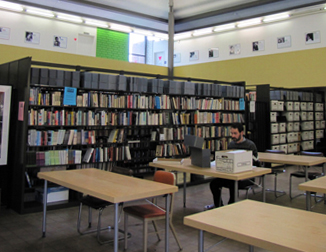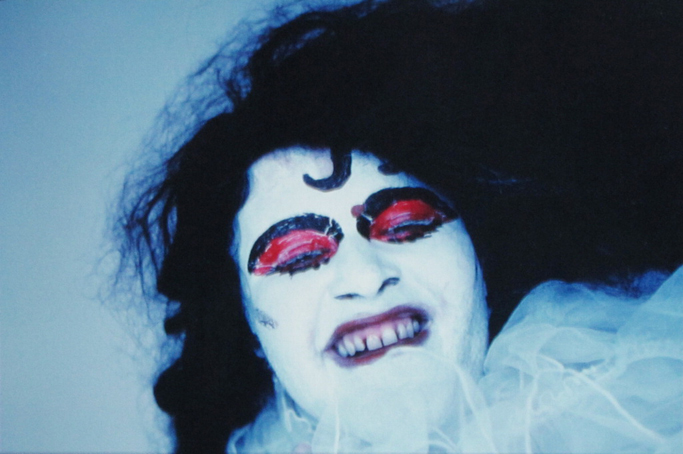
Frozen Art (1982)
Mundo Meza
Mundo Meza and Robert Legorreta were close friends and collaborated on numerous projects beginning in the late 1960s. Here, Legorreta presents himself as Cyclona, his alter ego or performance persona; Meza has done his makeup and shot the photograph. This private semi-performance is just one iteration of Cyclona and the collaborative process between Legorreta (subject) and Meza (artist). Frozen Art recalls earlier collaborative performances by the two during the late 1960s and '70s in East Los Angeles, along with fellow artist Gronk.
Color photograph 11 x 14 in
ONE National Gay & Lesbian Archives Courtesy of Patricia Meza and Elizabeth Signorelli.

Untitled (Ballet Dancers) (date unknown)
Sidney Bronstein
Oil on board 7 3/4 x 5 in
ONE National Gay & Lesbian Archives
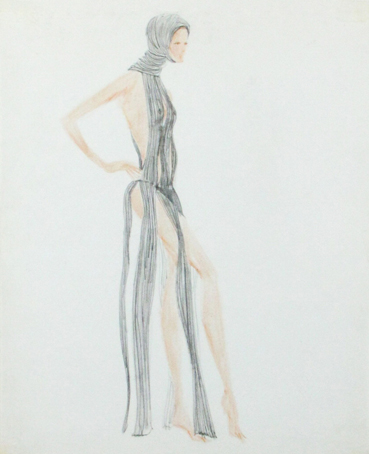
Untitled Fashion Sketch (1975)
Rudi Gernreich
Colored pencil on paper 20 x 15 in
ONE National Gay & Lesbian Archives
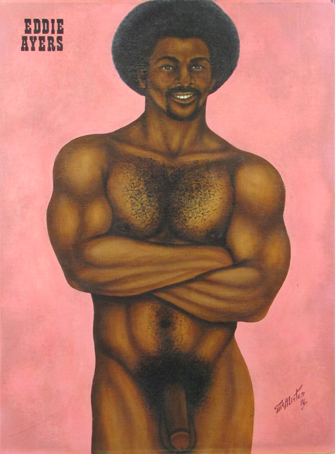
Eddie Ayers (1976)
John McAlister
Oil on board 24 x 18 in
ONE National Gay & Lesbian Archives
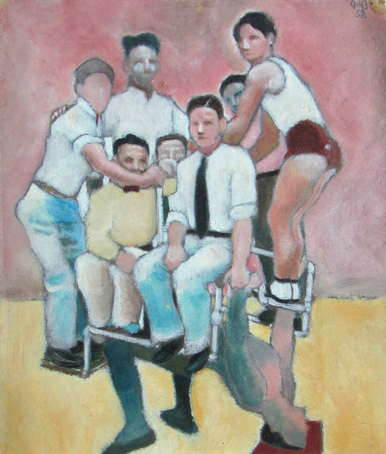
Untitled (Athlete Supporting Seven Youths) (1943)
Sidney Bronstein
Oil on board 8 x 9 1/2 in
ONE National Gay & Lesbian Archives

Homage to Jean Genet (1971)
John Quitman
Oil on canvas 49 x 61 in
ONE National Gay & Lesbian Archives

Sign from Beverly Shaw's Club Laurel, a Lesbian Nightclub in Studio City, California (ca. 1940s)
Artist Unknown
Noted for her sultry style within the 1940s gay nightclub scene in San Francisco, singer Beverly Shaw moved to Los Angeles in the early 1950s to continue her musical career. She performed at The Flamingo, a lesbian bar in Hollywood, and later at Club Laurel in Studio City, which she eventually bought and operated for over fourteen years. During the 1940s and '50s this sign with Shaw’s portrait hung at the Club Laurel. In the late 1950s or early '60s Shaw started her own record label, Club Laurel Records, and recorded her only full-length album, Songs "Tailored to Your Taste."
Oil and conté on board 39 x 70 in
ONE National Gay & Lesbian Archives
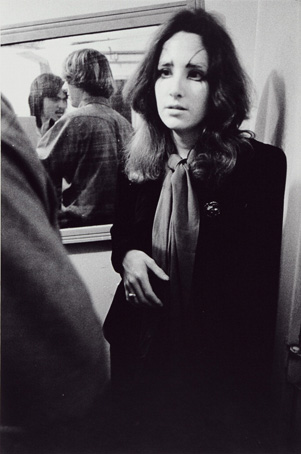
Jim, Troopers Hall, Hollywood (1971)
Anthony Friedkin
Part of Friedkin's "Gay Essay," 1969–72. Between 1969 and 1972, Anthony Friedkin photographed members of the gay community in Los Angeles and San Francisco. The “Gay Essay” shows a wide-range of gay individuals living on the West Coast, including drag queens, street hustlers, performers, activists, and numerous young people. As Friedkin attests, the series captures an important transitional moment in the gay community, post-Stonewall: “The gay people I chose to photograph were willing to share their awareness with me—something not many executive gay men or women were able to do for fear of damaging their reputations. . . . The experiences I had photographing these people were vastly different and at times beyond my own imagination. I found a tremendous honesty among them, a wonderful sense of the absurd, and a fantastic passion” (Anthony Friedkin, Camera [May 1974]). Photograph from the Morris Kight Collection, ONE Archives.
Gelatin silver print 14 x 11 in. each, overall dimension 14 x 90 in
ONE National Gay & Lesbian Archives Courtesy of the artist and Stephen Cohen Gallery, Los Angeles


